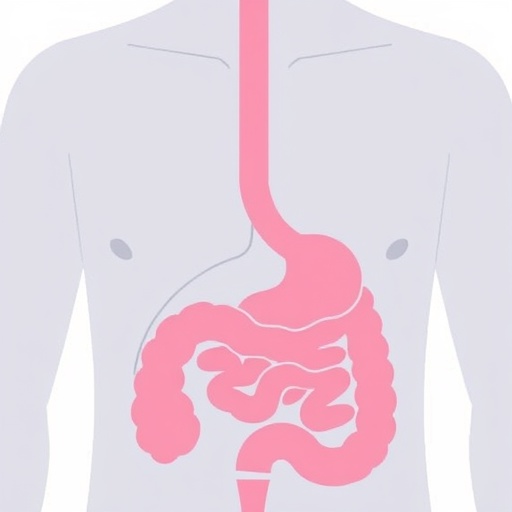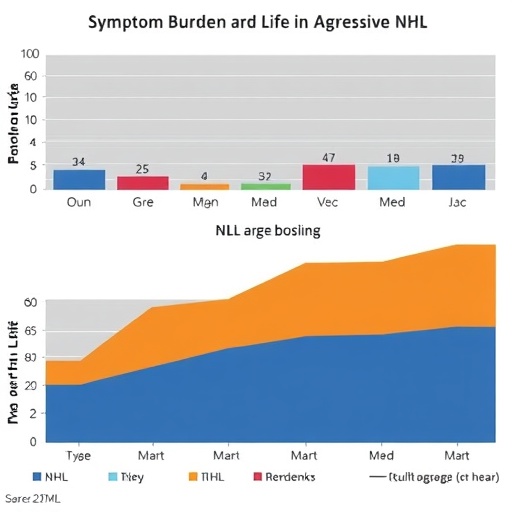
In an era marked by relentless pursuit of novel cancer therapies, the spotlight has turned toward natural compounds with groundbreaking potential. Among these, Astragaloside IV (AS-IV), a principal active saponin extracted from the ancient medicinal herb Astragalus membranaceus, emerges as a beacon of hope in the battle against hepatocellular carcinoma (HCC). This form of liver cancer remains one of the most aggressive malignancies with alarmingly high incidence and mortality worldwide, pressing the urgent need for innovative treatment strategies.
Recent comprehensive reviews have synthesized an array of experimental data, positing that AS-IV may fundamentally disrupt multiple oncogenic processes within HCC cells. The compoundâs multifaceted molecular actions appear to thwart tumor progression through concurrent pathways, marking a departure from the conventional single-target paradigm that often encounters resistance and limited efficacy. This systematic consolidation of evidence not only reinforces the pharmacological promise of AS-IV but also sets the stage for its eventual clinical translation.
Fundamentally, AS-IVâs ability to inhibit tumor cell proliferation appears rooted in its regulation of key intracellular signaling cascades. Various studies report modulation of pathways such as PI3K/Akt/mTOR and Wnt/β-catenin, which are notoriously hyperactivated in HCC and drive uncontrolled cell division. By attenuating these signaling hubs, AS-IV effectively hampers cellular replication machinery, curbing tumor growth in vitro and in vivo models. The intricacy of these interactions highlights the compoundâs sophisticated bioactivity at the molecular level.
Beyond mere growth inhibition, AS-IV demonstrates remarkable efficacy in impairing HCC cell motility, migration, and invasive behaviorsâcritical steps in cancer metastasis. Mechanistically, this is achieved through the decreased expression of matrix metalloproteinases (MMPs), enzymes pivotal for extracellular matrix degradation and tissue infiltration. The suppression of epithelial-to-mesenchymal transition (EMT) markers by AS-IV further solidifies its role in obstructing metastatic potential, offering a promising route to mitigate disease dissemination which is often linked to fatal outcomes.
A vital dimension of AS-IVâs antitumor arsenal lies in its capacity to induce programmed cell death or apoptosis in malignant hepatocytes. Research indicates that treatment with AS-IV triggers intrinsic apoptotic pathways, leading to mitochondrial membrane potential disruption and activation of caspasesâproteases decisive in cell demise. This apoptotic induction is crucial since defective cell death underpins tumor persistence and chemoresistance, situating AS-IV as a potential adjutant in overcoming therapeutic barriers.
The tumor microenvironmentâs immunosuppressive nature poses significant hurdles for effective immunotherapy in HCC. Intriguingly, AS-IV appears to recalibrate immune responses, restoring anti-tumor immunity by modulating immune checkpoint molecules and enhancing cytotoxic T lymphocyte activity. These immunomodulatory effects not only amplify direct tumoricidal actions but also synergize with other treatment modalities, potentially elevating therapeutic outcomes for patients who currently have limited options.
Drug resistance remains a formidable challenge in managing HCC, often leading to treatment failure. AS-IV offers a compelling countermeasure by sensitizing cancer cells to chemotherapeutic agents. Evidence suggests that it inhibits efflux pump proteins responsible for multidrug resistance, thereby retaining higher intracellular concentrations of anticancer drugs. Moreover, AS-IVâs antioxidative properties protect normal hepatocytes from chemotherapy-induced toxicity, hinting at a dual role in efficacy enhancement and toxicity reduction.
Angiogenesis, the formation of new blood vessels, fuels tumor growth and metastasis by supplying nutrients and oxygen. AS-IVâs antiangiogenic capabilities have come under rigorous scrutiny, revealing suppression of vascular endothelial growth factor (VEGF) pathways and downregulation of pro-angiogenic factors. This vascular normalization hampers the tumor’s ability to sustain itself, effectively starving cancer cells and impeding further malignancy progression.
The systematic review underlying these insights analyzed 172 scholarly articles, meticulously narrowing them down to 16 that met rigorous scientific criteria. This methodical approach affirms the robustness of the compiled data and underscores the reproducibility of AS-IVâs mechanistic effects across various experimental settings. However, the authors candidly emphasize the provisional nature of preclinical findings and the exigency for large-scale, multicenter randomized controlled trials.
Clinical translation of AS-IV, while promising, confronts obstacles such as pharmacokinetics, bioavailability, and standardized dosing regimens. Future research must address these facets, including detailed toxicological assessments and potential drug-drug interactions, to pave the way for safe and effective therapeutic deployment. Additionally, exploring combinatorial regimens integrating AS-IV with existing chemotherapeutics or immunotherapies could unlock synergistic effects, propelling HCC treatment into a new era.
This comprehensive synthesis highlights that AS-IVâs therapeutic value is not limited to one-dimensional anticancer activity but spans cell cycle arrest, apoptosis induction, metastatic inhibition, immune modulation, reversal of drug resistance, and angiogenesis suppression. Such pleiotropic mechanisms render it a formidable candidate in the armamentarium against hepatocellular carcinoma, particularly in light of the multifactorial pathogenesis of this malignancy.
Given the culturally entrenched use of Astragalus membranaceus in traditional Chinese medicine, the scientific validation of AS-IV bridges ancient wisdom and modern biomedical innovation. It exemplifies how ethnopharmacology continues to inspire drug discovery, offering a natural compound with sophisticated molecular interactions that complement and potentially surpass synthetic agents.
As the global burden of HCC escalates, driven by factors including hepatitis infections, alcohol use, and metabolic syndromes, the urgency to develop novel interventions is paramount. AS-IVâs multifaceted anti-HCC profile invites hope that it could emerge as a cornerstone of integrative cancer therapyâa testament to the power of natureâs pharmacopoeia when dissected with scientific rigor.
Ultimately, advancing AS-IV toward clinical use will require interdisciplinary collaboration, encompassing molecular biology, pharmacology, clinical oncology, and translational medicine. The path ahead is challenging but illuminated by the compelling evidence amassed to date, heralding a new frontier where natural compounds like AS-IV redefine therapeutic possibilities and improve patient prognoses worldwide.
Subject of Research: Molecular mechanisms of Astragaloside IV in hepatocellular carcinoma therapy
Article Title: Molecular mechanisms of astragaloside-IV in hepatocellular carcinoma therapy: a systematic review
Article References:
Gao, X., Hao, W., Wang, Y. et al. Molecular mechanisms of astragaloside-IV in hepatocellular carcinoma therapy: a systematic review. BMC Cancer 25, 1407 (2025). https://doi.org/10.1186/s12885-025-14758-w
Image Credits: Scienmag.com
DOI: https://doi.org/10.1186/s12885-025-14758-w
Tags: alternative cancer therapiesAstragaloside IV in liver cancerhepatocellular carcinoma treatmentinnovative strategies for liver cancerintracellular signaling pathways in HCCmolecular mechanisms of AS-IVnatural compounds for cancer therapypharmacological properties of Astragalus membranaceusPI3K/Akt/mTOR pathway modulationsaponins in cancer treatmenttumor progression inhibitionWnt/β-catenin signaling disruption




